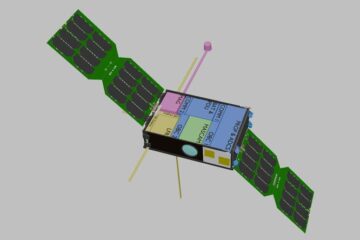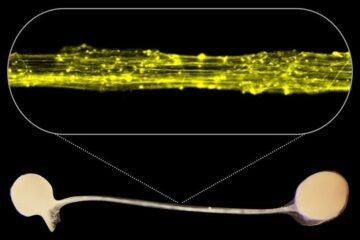Hot air: climate researchers at the University of Graz track temperature trends in the atmosphere

“The troposphere, which is the lowest layer of the atmosphere where weather conditions take place, has warmed by 0.25 to 0.35 degrees per decade since the 2000s,” says Andrea Steiner from the Wegener Center for Climate and Global Change at the University of Graz, summarising one of the findings.
Over the entire measurement period of the satellite era, the temperature has risen by 0.6 to 0.8 degrees. In the stratosphere, which lies above the troposphere, temperatures have been decreasing – by one to three degrees over the last 40 years.
This cooling is caused by the rise in greenhouse gases, which in this layer of the atmosphere re-emit thermal radiation from the Earth into space. The change in ozone concentration also plays a role. Since the late 1990s, the cooling of the lower stratosphere has slowed as the ozone layer has begun to recover.
“The temperature trends in the atmosphere, particularly around the tropics, are even more pronounced than at the Earth’s surface,” point out Steiner and her colleague Florian Ladstädter. Changes in the temperature of these layers influence complex interactions with the Earth’s surface and the oceans, affecting large-scale circulation patterns that shape our global weather patterns.
“The greenhouse gases are clearly responsible for this warming. A significant reduction in CO2 remains essential if we are to slow down climate change”, Steiner adds.
New picture
For their study, the researchers from Graz, together with international partners, evaluated and compared a range of data recorded at different altitudes from the late 1970s onwards. Sources included weather satellites, so-called GPS radio occultation measurements and ground-based measurements, with all these pieces of the puzzle coming together to form a consistent picture of atmospheric climate change. “It shows us that long-term observation data is essential for climate research,” say the researchers.
The Wegener Center at the University of Graz is one of the world’s leading institutions for atmospheric and climate research using GPS radio occultation. The activity on “Atmospheric Temperature Changes and their Drivers”, which Steiner co-leads, is an international collaboration within the SPARC framework of the World Climate Research Programme. The publication was produced as part of the “VERTICLIM – Atmospheric Vertical Structure and Trends in Climate Data” project sponsored by the Austrian Science Fund (FWF).
Associate Professor Dr. Andrea Steiner
University of Graz, Wegener Center for Climate and Global Change
Tel.: +43 (0) 316 380 8432
E-Mail: andi.steiner@uni-graz.at
A. K. Steiner, F. Ladstädter, W. J. Randel, A. C. Maycock, Q. Fu, C. Claud, H. Gleisner, L. Haimberger, S.-P. Ho, P. Keckhut, T. Leblanc, C. Mears, L. Polvani, B. D. Santer, T. Schmidt, V. Sofieva, R. Wing, and C.-Z. Zou, “Observed temperature changes in the troposphere and stratosphere from 1979 to 2018”, Journal of Climate, doi:10.1175/JCLI-D-19-0998.1.
https://www.sparc-climate.org/activities/temperature-changes/
https://wegcenter.uni-graz.at
Media Contact
More Information:
https://www.uni-graz.atAll latest news from the category: Earth Sciences
Earth Sciences (also referred to as Geosciences), which deals with basic issues surrounding our planet, plays a vital role in the area of energy and raw materials supply.
Earth Sciences comprises subjects such as geology, geography, geological informatics, paleontology, mineralogy, petrography, crystallography, geophysics, geodesy, glaciology, cartography, photogrammetry, meteorology and seismology, early-warning systems, earthquake research and polar research.
Newest articles

Caution, hot surface!
An international research team from the University of Jena and the Helmholtz Institute Jena are demystifying the mechanisms by which high-intensity laser pulses produce plasma on the surface of solids….

Exploring the Asteroid Apophis With Small Satellites
In five years’ time, a large asteroid will fly very close to Earth – a unique opportunity to study it. Concepts for a national German small satellite mission are being…

First model of the brain’s information highways developed
Our human brain is not only bigger and contains more neurons than the brains of other species, but it is also connected in a special pattern: Thick bundles of neurons…





















